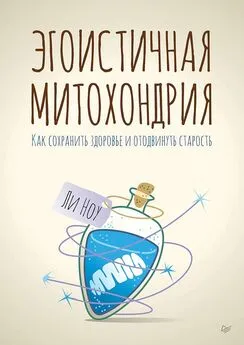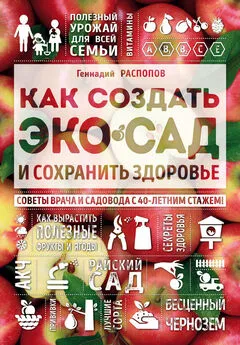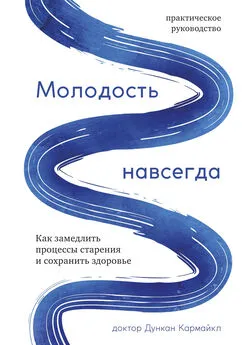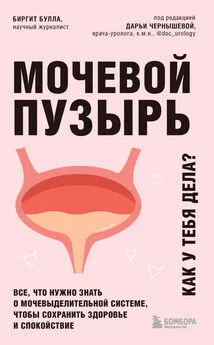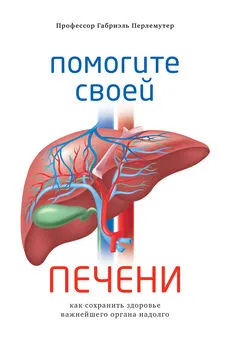Ли Ноу - Эгоистичная митохондрия. Как сохранить здоровье и отодвинуть старость
- Название:Эгоистичная митохондрия. Как сохранить здоровье и отодвинуть старость
- Автор:
- Жанр:
- Издательство:Питер
- Год:2020
- Город:Санкт-Петербург
- ISBN:978-5-4461-1021-6
- Рейтинг:
- Избранное:Добавить в избранное
-
Отзывы:
-
Ваша оценка:
Ли Ноу - Эгоистичная митохондрия. Как сохранить здоровье и отодвинуть старость краткое содержание
В нашем организме работают крошечные «энергетические станции» — митохондрии. Именно они отвечают за наше здоровье и отличное самочувствие. Когда они работают хорошо, мы не испытываем недостатка в энергии. А когда плохо — страдаем от заболеваний. Доктор Ли Ноу открывает тайну: заболевания, которые кажутся не связанными между собой на первый взгляд: диабет, рак, шизофрения, хроническая усталость, болезнь Паркинсона и другие — имеют общую природу.
Сегодня нам известно, как улучшить работу митохондрий, обеспечивающих организм энергией на 90 %. В этой книге вас ждет актуальная информация о питании, образе жизни, кетогенной диете и добавках, которые возвращают здоровье митохондриям, а следовательно, и нам.
Эгоистичная митохондрия. Как сохранить здоровье и отодвинуть старость - читать онлайн бесплатно ознакомительный отрывок
Интервал:
Закладка:
Estrada N. M., Isokawa M. Metabolic demand stimulates CREB signaling in the limbic cortex: implication for the induction of hippocampal synaptic plasticity by intrinsic stimulus for survival. Front Syst Neurosci. 2009 Jun 9; 3:5. doi:10.3389/neuro.06.005.2009.
Guarente L., Picard F. Calorie restriction — the SIR2 connection. Cell. 2005 Feb 25; 120(4): 473–82. doi:10.1016/j.cell.2005.01.029.
Hasselbalch S. G., et al. Brain metabolism during short-term starvation in humans. J Cereb Blood Flow Metab. 1994 Jan; 14(1):125–31. doi:10.1038/ jcbfm.1994.17.
Ivanova D. G., Yankova T. M. The free radical theory of aging in search of a strategy for increasing life span. Folia Med (Plovdiv). 2013 Jan — Mar; 55(1):33–41. doi:10.2478/folmed-2013-0003.
Jarrett S. G., et al. The ketogenic diet increases mitochondrial glutathione levels. J Neurochem. 2008 Aug; 106(3):1044–51. doi:10.1111/j.1471–4159.2008.05460.x. Epub 2008 May 5.
Jung K. J., et al. The redox-sensitive DNA binding sites responsible for age-related downregulation of SMP30 by ERK pathway and reversal by calorie restriction. Antioxid Redox Signal. 2006 Mar — Apr;8(3–4):671–80. doi:10.1089/ars.2006.8.671.
Kashiwaya Y., et al. D-b-hydroxybutyrate protects neurons in models of Alzheimer’s and Parkinson’s disease. Proc Natl Acad Sci USA. 2000 May 9; 97(10):5440–4. doi:10.1073/pnas.97.10.5440.
Kodde I. F., et al. Metabolic and genetic regulation of cardiac energy substrate preference. Comp Biochem Physiol A Mol Integr Physiol. 2007 Jan; 146(1):26–39. Epub 2006 Oct 3. doi:10.1016/j.cbpa.2006.09.014.
Laffel L. Ketone bodies: a review of physiology, pathophysiology and application of monitoring to diabetes. Diabetes Metab Res Rev. 1999 Nov — Dec;15(6):412–26. doi:10.1002 /(SICI)1520-7560(199911/12)15:6<412::AID-DMRR72>3.0.CO;2–8.
Lim E. L., et al. Reversal of type 2 diabetes: normalisation of beta cell function in association with decreased pancreas and liver triacylglycerol. Diabetologia. 2011 Oct;54(10):2506–14. Epub 2011 Jun 9. doi:10.1007/ s00125-011-2204-7.
Lin S. J, et al. Calorie restriction extends yeast life span by lowering the level of NADH. Genes Dev. 2004 Jan 1; 18(1):12–6. doi:10.1101/gad.1164804. Mattson M. P., Chan S. L., Duan W. Modification of brain aging and neurodegenerative disorders by genes, diet, and behavior. Physiol Rev. 2002 Jul; 82(3):637–72. doi:10.1152/physrev.00004.2002.
McInnes N., et al. Piloting a remission strategy in type 2 diabetes: results of a randomized controlled trial. J Clin Endocrinol Metab. 2017 May 1; 102(5):1596–1605. Epub 2017 Mar 15. doi:10.1210/jc.2016–3373.
Mercken E. M., et al. Calorie restriction in humans inhibits the PI3K/AKT pathway and induces a younger transcription profile. Aging Cell. 2013 Aug; 12(4):645–51. Epub 2013 Apr 20. doi:10.1111/acel.12088.
Picard F., et al. Sirt 1 promotes fat mobilization in white adipocytes by repressing PPARgamma. Nature. 2004 Jun 17; 429(6993):771–6. doi:10.1038/ nature02583.
Prins M. L. Cerebral metabolic adaptation and ketone metabolism after brain injury. J Cereb Blood Flow Metab. 2008 Jan; 28(1):1–16. Epub 2007 Aug 8. doi:10.1038/sj.jcbfm.9600543.
Revollo J. R., Grimm A. A., Imai S. The NAD biosynthesis pathway mediated by nicotinamide phosphoribosyltransferase regulates Sir2 activity in mammalian cells. J Biol Chem. 2004 Dec 3; 279(49):50754–63. doi:10.1074/ jbc.M408388200.
Rose G., et al. Variability of the SIRT3 gene, human silent information regulator Sir2 homologue, and survivorship in the elderly. Exp Gerontol. 2003 Oct; 38(10):1065–70. doi:10.1016/S0531-5565(03)00209-2.
Sato K., et al. Insulin, ketone bodies, and mitochondrial energy transduction. FASEB J. 1995 May; 9(8):651–8.
Scheibye-Knudsen M, et al. A high-fat diet and NAD(+) activate Sirt1 to rescue premature aging in cockayne syndrome. Cell Metab. 2014 Nov 4; 20(5):840–55. Epub 2014 Nov 4. doi:10.1016/j.cmet.2014.10.005.
Sharman M. J., et al. A ketogenic diet favorably affects serum biomarkers for cardiovascular disease in normal-weight young men. J Nutr. 2002 Jul; 132(7):1879–85.
Sort R., et al. Ketogenic diet in 3 cases of childhood refractory status epilepticus. Eur J Paediatr Neurol. 2013 Nov; 17(6):531–6. Epub 2013 Jun 7. doi:10.1016/j.ejpn.2013.05.001.
Spindler S. R. Caloric restriction: from soup to nuts. Aging Res Rev. 2010 Jul; 9(3):324–53. doi:10.1016/j.arr.2009.10.003.
VanItallie T. B., Nufert T. H. Ketones: metabolism’s ugly duckling. Nutr Rev. 2003 Oct; 61(10): 327–41. doi:10.1301/nr.2003.oct.327–341.
Veech R. L., et al. Ketone bodies, potential therapeutic uses. IUBMB Life. 2001 Apr;51(4): 241–7. doi:10.1080/152165401753311780.
Wang S. P., et al. Metabolism as a tool for understanding human brain evolution: lipid energy metabolism as an example. J Hum Evol. 2014 Dec; 77:41–9. Epub 2014 Dec 6. doi:10.1016 /j.jhevol.2014.06.013.
Wegman M. P., et al. Practicality of intermittent fasting in humans and its effect on oxidative stress and genes related to aging and metabolism. Rejuvenation Res. 2015 Apr; 18(2):162–72. doi:10.1089/rej.2014.1624.
Wood J. G., et al. Sirtuin activators mimic caloric restriction and delay aging in metazoans. Nature. 2004 Aug 5; 430(7000):686–9. doi:10.1038/ nature02789.
Boon M. R., et al. Brown adipose tissue: the body’s own weapon against obesity? Ned Tijdschr Geneeskd. 2013; 157(20):A5502.
Crane J. D., et al. Massage therapy attenuates inflammatory signaling after exercise-induced muscle damage. Sci Transl Med. 2012 Feb 1;4(119):119ra13. doi:10.1126/scitranslmed.3002882.
Lee P., et al. Temperature-acclimated brown adipose tissue modulates insulin sensitivity in humans. Diabetes. 2014 Nov; 63(11):3686–98. Epub 2014 Jun 22. doi:10.2337/db14-0513.
Lo K. A., Sun L. Turning WAT into BAT: a review on regulators controlling the browning of white adipocytes. Biosci Rep. 2013 Sep 6; 33(5):e00065. Epub Jul 30.
van der Lans A. A., et al. Cold acclimation recruits human brown fat and increases nonshivering thermogenesis. J Clin Invest. 2013 Aug;123(8):3395–403. Epub 2013 Jul 15. doi:10.1172 /JCI68993.
Alf D., Schmidt M. E., Siebrecht S. C. Ubiquinol supplementation enhances peak power production in trained athletes: a double-blind, placebo controlled study. J Int Soc Sports Nutr. 2013 Apr 29;10(1):24. Epub. doi:10.1186/1550-2783-10-24.
Alzheimer’s Association International Conference (AAIC); 2012 Jul 14–19; Vancouver, BC. Alzheimers Dement. Abstract F1-03-01.
Alzheimer’s Association International Conference (AAIC); 2012 Jul 14–19; Vancouver, BC. Alzheimers Dement. Abstracts FI-03-02.
Alzheimer’s Association International Conference (AAIC); 2012 Jul 14–19; Vancouver, BC. Alzheimers Dement. Abstracts P1-109.
Alzheimer’s Association International Conference (AAIC); 2012 Jul 14–19; Vancouver, BC. Alzheimers Dement. Abstracts P1-121.
Barrès R., et al. Acute exercise remodels promoter methylation in human skeletal muscle. Cell Metab. 2012 Mar 7; 15(3):405–11. doi:10.1016/j. cmet.2012.01.001.
Bergeron R., et al. Chronic activation of AMP kinase results in NRF-1 activation and mitochondrial biogenesis. Am J Physiol Endocrinol Metab. 2001 Dec; 281(6):E1340–E1346.
Brown W. J., Pavey T., Bauman A. E. Comparing population attributable risks for heart disease across the adult lifespan in women. Br J Sports Med. 2015 Jul 29. Epub 2014 May 8. doi:10.1136/bjsports-2015-095213. Campbell P., et al. Associations of recreational physical activity and leisure time spent sitting with colorectal cancer survival. J Clin Oncol. 2013 Mar 1; 31(7):876–85. doi:10.1200/JCO.2012.45.9735.
Clanton T. L. Hypoxia-induced reactive oxygen species formation in skeletal muscle. J Appl Physiol (1985). 2007 Jun; 102(6):2379–88. doi:10.1152/ japplphysiol.01298.2006.
Díaz-Castro J., et al. Coenzyme Q(10) supplementation ameliorates inflammatory signaling and oxidative stress associated with strenuous exercise. Eur J Nutr. 2012 Oct; 51(7):791–9. Epub 2011 Oct 12. doi:10.1007/ s00394-011-0257-5.
Erickson K. I., et al. Exercise training increases size of hippocampus and improves memory. Proc Natl Acad Sci USA. 2011 Feb 15; 108(7):3017–22. Epub 2011 Jan 31. doi:10.1073/pnas.1015950108.
Gioscia-Ryan R. A., et al. Voluntary aerobic exercise increases arterial resilience and mitochondrial health with aging in mice. Aging (Albany NY). 2016 Nov 22; 8(11):2897–2914. doi:10.18632/aging.101099.
Gram M., Dahl R., Dela F. Physical inactivity and muscle oxidative capacity in humans. Eur J Sport Sci. 2014; 14(4):376–83. Epub 2013 Aug 1. doi: 10.1080/17461391.2013.823466.
Greggio C., et al. Enhanced respiratory chain supercomplex formation in response to exercise in human skeletal muscle. Cell Metab. 2017 Feb 7; 25(2):301–11. Epub 2016 Dec 1. doi:10.1016/j.cmet.2016.11.004.
Hood D. A. Contractile activity-induced mitochondrial biogenesis in skeletal muscle [invited review]. J Appl Physiol (1985). 2001 Mar; 90(3):1137– 57.
Johnson M. L., et al. Chronically endurance-trained individuals preserve skeletal muscle mitochondrial gene expression with age but differences within age groups remain. Physiol Rep. 2014 Dec; 2(12):e12239. Epub 2014 Dec 18. doi:10.14814/phy2.12239.
Kang C., et al. Exercise training attenuates aging-associated mitochondrial dysfunction in rat skeletal muscle: role of PGC-1α. Exp Gerontol. 2013 Nov; 48(11):1343–50. Epub 2013 Aug 29. doi:10.1016/j.exger.2013.08.004. Koltai E., et al. Age-associated declines in mitochondrial biogenesis and protein quality control factors are minimized by exercise training. Am J Physiol Regul Integr Comp Physiol. 2012 Jul 15; 303(2):R127–R134. Epub 2012 May 9. doi:10.1152/ajpregu.00337.2011.
Konopka A. R., et al. Markers of human skeletal muscle mitochondrial biogenesis and quality control: effects of age and aerobic exercise training. J Gerontol A Biol Sci Med Sci. 2014 Apr; 69(4):371–8. Epub 2013 Jul 20. doi:10.1093/gerona/glt107.
Konopka A. R., et al. Defects in mitochondrial efifciency and H2O2 emissions in obese women are restored to a lean phenotype with aerobic exercise training. Diabetes. 2015 Jun; 64(6):2104–15. doi:10.2337/db14-1701. Lawson E. C., et al. Aerobic exercise protects retinal function and structure from light-induced retinal degeneration. J Neurosci. 2014 Feb 12; 34(7):2406–12. doi:10.1523/JNEUROSCI.2062-13.2014.
Liu C. C., et al. Lycopene supplementation attenuated xanthine oxidase and myeloperoxidase activities in skeletal muscle tissues of rats after exhaustive exercise. Br J Nutr. 2005; 94: 595–601. doi:10.1079/BJN20051541. Marcelino T. B., et al. Evidences that maternal swimming exercise improves antioxidant defenses and induces mitochondrial biogenesis in brain of young Wistar rats. Neuroscience. 2013 Aug 29; 246:28–39. Epub 2013 Apr 29. doi:10.1016/j.neuroscience.2013.04.043.
Melov S., et al. Resistance exercise reverses aging in human skeletal muscle. PLoS One. 2007 May 23; 2(5):e465. doi:10.1371/journal.pone.0000465.
Menshikova E. V., et al. Effects of exercise on mitochondrial content and function in aging human skeletal muscle. J Gerontol A Biol Sci Med Sci. 2006 Jun; 61(6):534–40.
Читать дальшеИнтервал:
Закладка:
